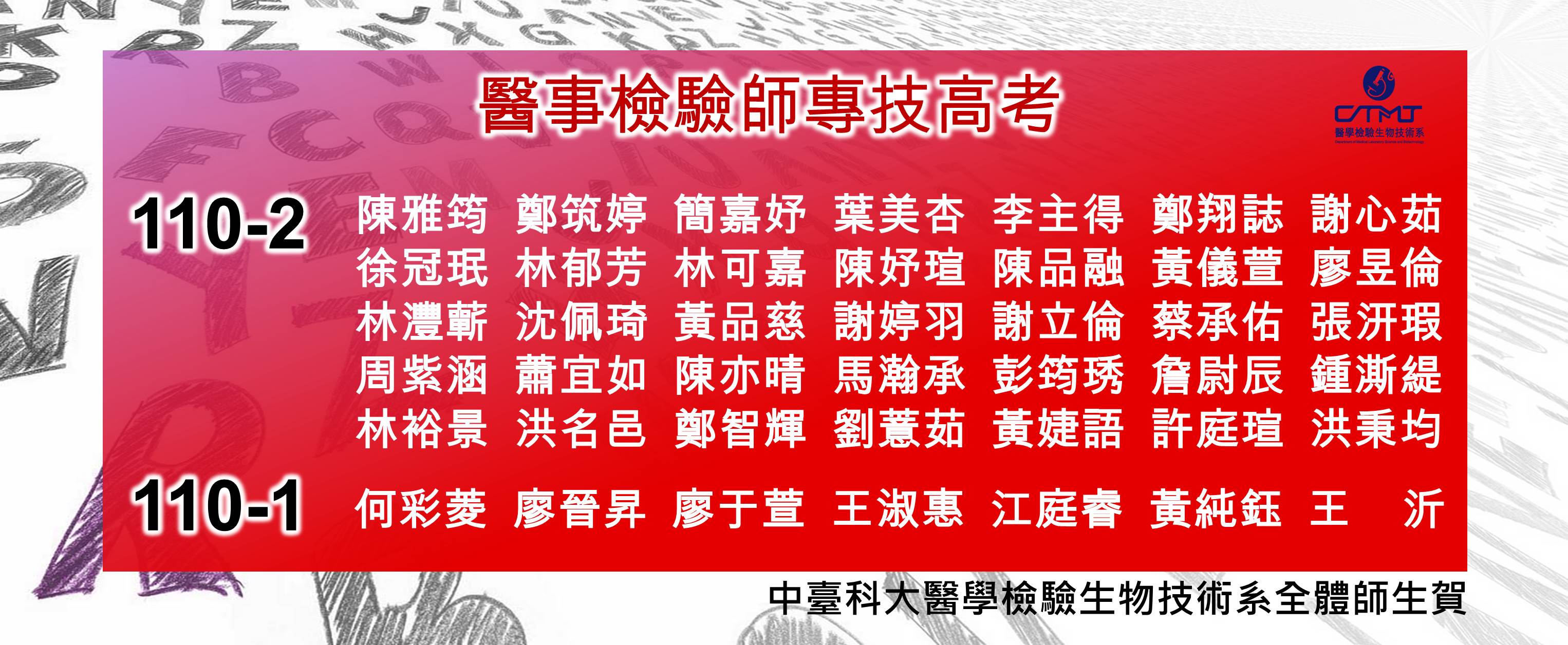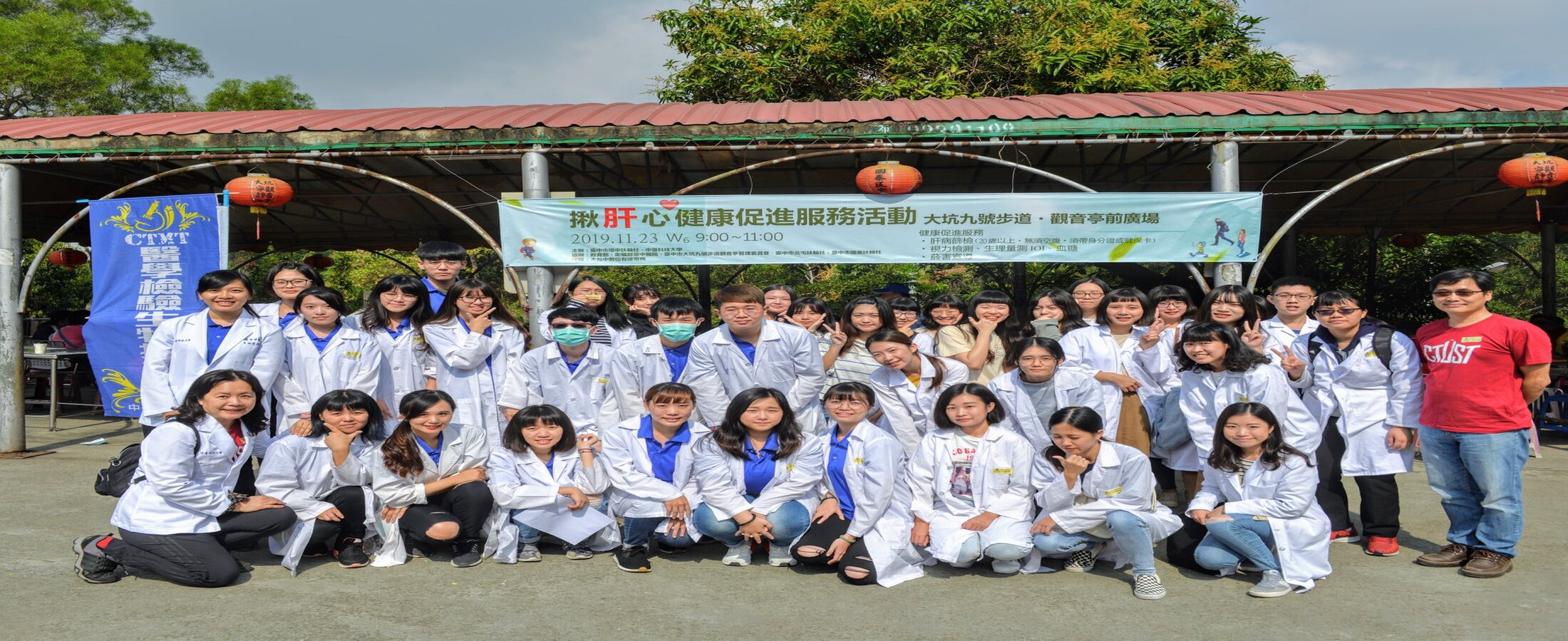Wang,Shyang Guang
hyang-Guang Wang
Job title: Associate Professor
Research expertise:
- Yeast one-hybrid screening.
- Monoclonal antibody generation (Hybridoma technology).
- Cell culture techniques, exogenous protein expression and protein characterization.
- Cell line generation.
- 10L-bioreactor operation for the mammalian cell culture (fed-batch culture).
- Yeast two-hybrid screening.
- General knowledge of process development, pre-clinical trial, QA&QC and cGMP concepts&documentation of biologics, ISO 15189.
- Long-acting therapeutic protein technology.
- Patent issues.
- Drug screening.
- Molecular cloning.
- Biochemistry assays.
- Signal transduction study.
- Broad and extensive knowledge of biotechnology industry
Emai: sgwang@ctust.edu.tw
Office phone number:(04) 2239-1647 #3975
Education:
Ph.D., Department of Physiology and Biophysics, University of Southern California School of Medicine, USA.
B.S., Department of Medical Laboratory Science and Biotechnology, National Yang-Ming University, Taiwan.
Professional Fields:
- Yeast one-hybrid screening.
- Monoclonal antibody generation (Hybridoma technology).
- Cell culture techniques, exogenous protein expression and protein characterization.
- Cell line generation.
- 10L-bioreactor operation for the mammalian cell culture (fed-batch culture).
- Yeast two-hybrid screening.
- General knowledge of process development, pre-clinical trial, QA&QC and cGMP concepts&documentation of biologics, ISO 15189.
- Long-acting therapeutic protein technology.
- Patent issues.
- Drug screening.
- Molecular cloning.
- Biochemistry assays.
- Signal transduction study.
- Broad and extensive knowledge of biotechnology industry
- Representative Publication in 5 Years
-
- Wang SG, Hung CT, Li SF, Lu YC, Chang SC, Lee HM, Pai LW, Lai FI, Huang YW, Chung YC. Incidence of ambulatory care visits after needlestick and sharps injuries among healthcare workers in Taiwan: a nationwide population-based study. Kaohsiung J Med Sci. 2014 Sep;30(9):477-83. (SCI. first author)
- Book: Illustrated Biostatistics complemented with Excel. Wang SG
- Wang SG, Huang MH, Li JH, Lai FI, Lee HM, Hsu YN. Punicalagin induces apoptotic and autophagic cell death in human U87MG glioma cells. Acta Pharmacol Sin. 2013 Nov 5;34(11):1411-9. (SCI. first author)
- Lai JH, Jan HJ, Liu LW, Lee CC, Wang SG, Hueng DY, Cheng YY, Lee HM, and Ma HI. Nodal regulates energy metabolism in glioma cells by inducing expression of hypoxia-inducible factor 1a. Neuro Oncol. 2013 Oct;15(10):1330-41. (SCI)
- Huang CH, Shiu SM, Wu MT, Chen WL, Wang SG*, Lee HM. Monacolin K affects lipid metabolism through SIRT1/AMPK pathway in HepG2 cells. Arch Pharm Res. 2013 Dec 36(12):1541-51. (SCI, corresponding author)
- Chung YC, Hung CT, Li SF, Lee HM, Wang SG, Chang SC, Pai LW, Huang CN, Yang JH. Risk of musculoskeletal disorder among Taiwanese nurses cohort: a nationwide population-based study. BMC Musculoskelet Disord. 2013 Apr 23;14(1):144. (SCI)
- Chen WL, Chen YL, Chiang YM, Wang SG*, Lee HM. Fenofibrate lowers lipid accumulation in myotubes by modulating the PPARα/AMPK/FoxO1/ATGL pathway. Biochem Pharmacol. 2012 Aug 15;84(4):522-31. (SCI, co-corresponding author)
- Chen WL, Kang CH, Wang SG, Lee HM. α-Lipoic acid regulates lipid metabolism through induction of sirtuin 1 (SIRT1) and activation of AMP-activated protein kinase. Diabetologia. 2012 Jun;55(6):1824-35. (SCI)
- Lin ML, Lu YC, Chung JG, Wang SG, Lin HT, Kang SE, Tang CH, Ko JL, Chen SS. Down-regulation of MMP-2 through the p38 MAPK-NF-kappaB-dependent pathway by aloe-emodin leads to inhibition of nasopharyngeal carcinoma cell invasion. Mol Carcinog. 2010 Sep;49(9):783-97. (SCI)
- Lin ML, Lu YC, Chung JG, Li YC, Wang SG, Ng SH, Wu CY, Su HL, Chen SS. Aloe-emodin induces apoptosis of human nasopharyngeal carcinoma cells via caspase-8-mediated activation of the mitochondrial death pathway. Cancer Lett. 2010 May 1;291(1):46-58. (SCI)
- Wang, SG. Co-localization and functional significance of the association of hTAOK1 with the proteosome b-type subunit. 中臺學報第二十卷第二期(中華民國九十七年十二月) ( corresponding author)
- Wu MF, Wang SG*. Human TAO kinase 1 induces apoptosis in SH-SY5Y cells. Cell Biol Int. 2008 Jan;32(1):151-6. (SCI, corresponding author)
- 《生物科技產業實務》(Biotechnology Industry Practices) 王祥光著,新文京開發出版股份有限公司出版,出版日期:2009/09/15 。(ISBN:978-986-236-125-2)
- 《生物科技產業概論》(Understanding Biotechnology Industry) 王祥光著,新文京開發出版股份有限公司出版,出版日期:2007/09/12 。(ISBN:978-986-150-702-6)
- 《分子生物技術:重組DNA的原理與應用》 總校閱:江善宗,編譯者:陳威銘,吳建威,林珮靜,陳俊宏,高馨馨,朱旆億,王祥光,林榮芳,李憲明,李珮瑜,鄭金益,新文京開發出版股份有限公司出版,出版日期:2007/08/20。 (ISBN:978-986-150-643-2)
- RA Farely, Schreiber, S., S.G. Wang, and G. Scheiner-Bobis. (2001) A hybrid between Na+,K+-ATPase and H+,K+-ATPase is sensitive to palytoxin, ouabain, and SCH 28080. J Biol Chem 276, 2608-15. (SCI)
- Wang, S.G., RA Farley. (1998) Valine 904, Tyrosine 898, an Cysteine 908 in Na,K-ATPase a Subunits Are Important for Assembly with b Subunits. J Biol Chem 273, 29400-29405. (SCI)
- Wang, S.G., KA Eakle, R. Levenson, RA Farley. (1997) Na+-K+-ATPase a-subunit containing Q905-V930 of gastric H+-K+-ATPase a preferentially assembles with H+-K+-ATPase b. Am J Physiol 272, C923-C930. (SCI)
- Eakle, KA, Kabalin MA, S.G. Wang, Farley RA. The Influence of b Subunit Structure on the Stability of Na+/K+-ATPase Complexes and Interaction with K+. (1994) J Biol Chem 269, 6550-6557. (SCI)
- Eakle, K.A., S.G. Wang, and R.A. Farley. (1994) The Amino-terminal Transmembrane Region of the b Subunit is important for Na+/K+-ATPase Complex Stability. In: The Sodium Pump: Structure Mechanism, hormonal Control and its Role in Disease. (Ernst Bamberg, Wilhelm Schoner, eds) Darmastadt : Steinkopff; New York : Springer, pp. 206-209.



